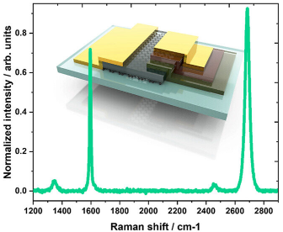MSc thesis project proposal
Graphene-based memristors for gas sensing
Memristors, first proposed by Leon Chua in 1971, were successfully realized by HP Labs in 2008. A memristor primarily consists of an oxide material sandwiched between two metal electrodes and behaves like a resistor with memory. When a voltage is applied, the resistance state of the memristor can be altered, and it retains its last stored state even after power is disconnected. Memristive devices have emerged as strong candidates for applications in memory, computing, security, and sensing. The integration of 2D materials, such as graphene, into memristor-based gas sensors can significantly improve their performance
This project aims to harness the unique advantages of memristor devices combined with 2D materials to design, develop, and test an advanced NO₂ sensor. By integrating these materials, we seek to overcome the limitations of existing NO₂ sensing technologies and achieve enhanced performance in terms of sensitivity, selectivity, and energy efficiency. The results of this initiative could significantly improve air quality monitoring systems, contributing to better environmental protection and public health.
Assignment
- Literature review of graphene-based memristive devices
- Select a suitable memristive device lay-out
- Fabricate the memristor in the cleanroom
- Electrical and gas characterisation
Requirements
- Creative MSc students
- Background in microelectronics, material science, or nanotechnology
- Able to work independently
- Fluent in English
Contact
dr.ir. Sten Vollebregt
Electronic Components, Technology and Materials Group
Department of Microelectronics
Last modified: 2025-02-13
